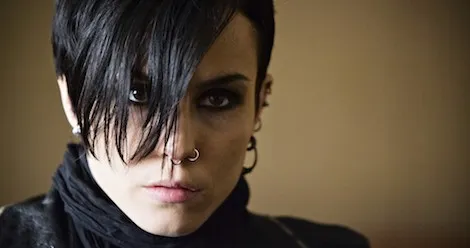
Which Literary Heroine Shares Your Personality Type?
This content contains affiliate links. When you buy through these links, we may earn an affiliate commission.
Are you a dreamer like Lucy Pevensie or high-powered boss like Miranda Priestly? Read on to find out which famous literary heroine shares your Myers-Briggs personality type.

 Beneath her prim-and-proper exterior, Margaret is warm, outgoing, and deeply concerned with the welfare of the laborers in Milton. ESFJs have a tendency to fill the role of mother hen, whether or not they are actually mothers. Margaret does this with the cotton mill workers—bringing them food during the strike and arguing their cause with the mill owners.
Beneath her prim-and-proper exterior, Margaret is warm, outgoing, and deeply concerned with the welfare of the laborers in Milton. ESFJs have a tendency to fill the role of mother hen, whether or not they are actually mothers. Margaret does this with the cotton mill workers—bringing them food during the strike and arguing their cause with the mill owners.
 Hermione is a stickler for rules—a definite xSTJ trait if ever there was one. She’s logical, disciplined, organized, and has a habit of taking charge in almost any situation she encounters. The ESTJ type is also called “the supervisor” and that’s exactly the role Hermione often finds herself playing in her two xSFP friends, Ron and Harry.
Hermione is a stickler for rules—a definite xSTJ trait if ever there was one. She’s logical, disciplined, organized, and has a habit of taking charge in almost any situation she encounters. The ESTJ type is also called “the supervisor” and that’s exactly the role Hermione often finds herself playing in her two xSFP friends, Ron and Harry.
 Everyone always talks about Anne, but Diana is a vastly underrated character. She may not be quite as imaginative or adventurous as Anne but she exemplifies the best qualities of the ISFJ—kindness and loyalty. And under Anne’s influence, she eventually learns to let her wild side out to play once in a while.
Everyone always talks about Anne, but Diana is a vastly underrated character. She may not be quite as imaginative or adventurous as Anne but she exemplifies the best qualities of the ISFJ—kindness and loyalty. And under Anne’s influence, she eventually learns to let her wild side out to play once in a while.
 xSxJs are known for their adherence to tradition but Bathsheba proves that stereotypes don’t always reflect reality. In a time when women are restricted and oppressed in every way imaginable, Bathsheba revels in her independence and freedom. She rides her horse like a man, owns her own business, and isn’t afraid to claim her rightful place among the male farm owners in her community.
xSxJs are known for their adherence to tradition but Bathsheba proves that stereotypes don’t always reflect reality. In a time when women are restricted and oppressed in every way imaginable, Bathsheba revels in her independence and freedom. She rides her horse like a man, owns her own business, and isn’t afraid to claim her rightful place among the male farm owners in her community.
 Bridget is vivacious, gregarious, and adventurous. She leaps before looking and always follows her heart, even when it gets her in trouble. As an xSxP, she has a natural physical grace, which makes her a great soccer player. Bridget is a whirlwind of a girl and she can impulsively make self-destructive choices at times, but she’s also the boldest of her friends.
Bridget is vivacious, gregarious, and adventurous. She leaps before looking and always follows her heart, even when it gets her in trouble. As an xSxP, she has a natural physical grace, which makes her a great soccer player. Bridget is a whirlwind of a girl and she can impulsively make self-destructive choices at times, but she’s also the boldest of her friends.
 Bold, brash, and completely out of step with the conventional womanly virtues held up as models of her time, Scarlett is not your typical heroine. ESTPs rarely are. Though Scarlett has, well, issues, she’s a great example of the resourcefulness that is one of the ESTP’s most overlooked and under-appreciated characteristics.
Bold, brash, and completely out of step with the conventional womanly virtues held up as models of her time, Scarlett is not your typical heroine. ESTPs rarely are. Though Scarlett has, well, issues, she’s a great example of the resourcefulness that is one of the ESTP’s most overlooked and under-appreciated characteristics.
 ISFPs are an interesting bunch. They can be quiet and incredibly charming in turns. They have a distinctive soft side paired with plenty of nerve. They appreciate the comforts of home but also love a good adventure. Claire exemplifies all these traits and shows the ISFP’s adaptability to new (or old…as in waaay back in time old) circumstances.
ISFPs are an interesting bunch. They can be quiet and incredibly charming in turns. They have a distinctive soft side paired with plenty of nerve. They appreciate the comforts of home but also love a good adventure. Claire exemplifies all these traits and shows the ISFP’s adaptability to new (or old…as in waaay back in time old) circumstances.
 ISTPs are intense, adaptable, and have a certain tactical genius that no other personality type can match. They can come across as socially awkward. This isn’t necessarily because they’re incapable of blending in; they just don’t care that much about what people think of them. Lisbeth is a perfect combination of the ISTP’s intellectual acumen and physical prowess.
ISTPs are intense, adaptable, and have a certain tactical genius that no other personality type can match. They can come across as socially awkward. This isn’t necessarily because they’re incapable of blending in; they just don’t care that much about what people think of them. Lisbeth is a perfect combination of the ISTP’s intellectual acumen and physical prowess.
 ENFPs are passionate and full of life. They enjoy long walks in the fresh air, stimulating conversation, and tend to push back against conventional wisdom. With introverted feeling as their auxiliary function, they have a strong sense of morality and can be quick to judgment, much like how Lizzie judges Mr. Darcy when she first meets him.
ENFPs are passionate and full of life. They enjoy long walks in the fresh air, stimulating conversation, and tend to push back against conventional wisdom. With introverted feeling as their auxiliary function, they have a strong sense of morality and can be quick to judgment, much like how Lizzie judges Mr. Darcy when she first meets him.
 Anna is a passionate woman stuck in a passionless marriage. ENFJs are heart-centered people, so the idea of staying in a relationship driven more by duty and convention than love is untenable to her, especially when presented by the alluring alternative embodied in the equally passionate ESFP, Vronsky. Unfortunately, that doesn’t work out so well for our tragic heroine.
Anna is a passionate woman stuck in a passionless marriage. ENFJs are heart-centered people, so the idea of staying in a relationship driven more by duty and convention than love is untenable to her, especially when presented by the alluring alternative embodied in the equally passionate ESFP, Vronsky. Unfortunately, that doesn’t work out so well for our tragic heroine.
 INFPs are dreamers. They have vast imaginations and the ability to see magic where others see only the humdrum realities of everyday life. Lucy believes in Narnia even when her siblings say she’s just imagining things. Out of all her siblings, she also forms the closest bonds with the creatures she meets in Narnia, possibly because they feel she intuitively understands them.
INFPs are dreamers. They have vast imaginations and the ability to see magic where others see only the humdrum realities of everyday life. Lucy believes in Narnia even when her siblings say she’s just imagining things. Out of all her siblings, she also forms the closest bonds with the creatures she meets in Narnia, possibly because they feel she intuitively understands them.
 Galadriel has the gift of foresight, which is partly a magical elf thing, but also partly an INxJ thing. INxJs lead with introverted intuition, a cognitive function that’s really good at synthesizing information and projecting it into the future to see perceive outcomes. INFJs often come across as older and wiser than their years.
Galadriel has the gift of foresight, which is partly a magical elf thing, but also partly an INxJ thing. INxJs lead with introverted intuition, a cognitive function that’s really good at synthesizing information and projecting it into the future to see perceive outcomes. INFJs often come across as older and wiser than their years.
 Yes, I am cheating here since Cosima started out as a television character. But since there is an Orphan Black graphic novel, I’m going with it because finding ENTP women in well-known books is REALLY hard. Which is too bad because they’re amazing. Case in point, Cosima is quirky, outgoing, intellectually brilliant, and always up for a bit of fun—classic characteristics of ENTPs the world over.
Yes, I am cheating here since Cosima started out as a television character. But since there is an Orphan Black graphic novel, I’m going with it because finding ENTP women in well-known books is REALLY hard. Which is too bad because they’re amazing. Case in point, Cosima is quirky, outgoing, intellectually brilliant, and always up for a bit of fun—classic characteristics of ENTPs the world over.
 Miranda Priestly may not be a typical heroine but no one can deny that she is one badass woman. She’s worked her way to the top of a vicious industry and maintains her authority with an impressively steely air. She expects those around her to prove themselves just like she did and only bestows favor on those who have passed through the fiery trial of meeting her ridiculously high expectations.
Miranda Priestly may not be a typical heroine but no one can deny that she is one badass woman. She’s worked her way to the top of a vicious industry and maintains her authority with an impressively steely air. She expects those around her to prove themselves just like she did and only bestows favor on those who have passed through the fiery trial of meeting her ridiculously high expectations.
 INTP women in fiction are rare and that’s one of the many reasons why I love Violet Baudelaire so much. INTPs love playing with ideas and are natural inventors. They’re highly logical and quick thinkers who can adapt to unexpected circumstances and challenges with relative ease—useful skills when you’re on the run from a villainous count.
INTP women in fiction are rare and that’s one of the many reasons why I love Violet Baudelaire so much. INTPs love playing with ideas and are natural inventors. They’re highly logical and quick thinkers who can adapt to unexpected circumstances and challenges with relative ease—useful skills when you’re on the run from a villainous count.
 Clarice may be new and inexperienced, but she won’t be Dr. Lecter’s lunch. INTJs may be blunt at times but they can play mind games with the best of them. Clarice’s unique relationship with Lecter is even more interesting because they’re both INTJs. Their interactions are like a game of psychological chess—and Clarice can more than keep up with the brilliant cannibal.
Which literary heroine are you? Leave a note in the comments below!
You may also like…
Clarice may be new and inexperienced, but she won’t be Dr. Lecter’s lunch. INTJs may be blunt at times but they can play mind games with the best of them. Clarice’s unique relationship with Lecter is even more interesting because they’re both INTJs. Their interactions are like a game of psychological chess—and Clarice can more than keep up with the brilliant cannibal.
Which literary heroine are you? Leave a note in the comments below!
You may also like…
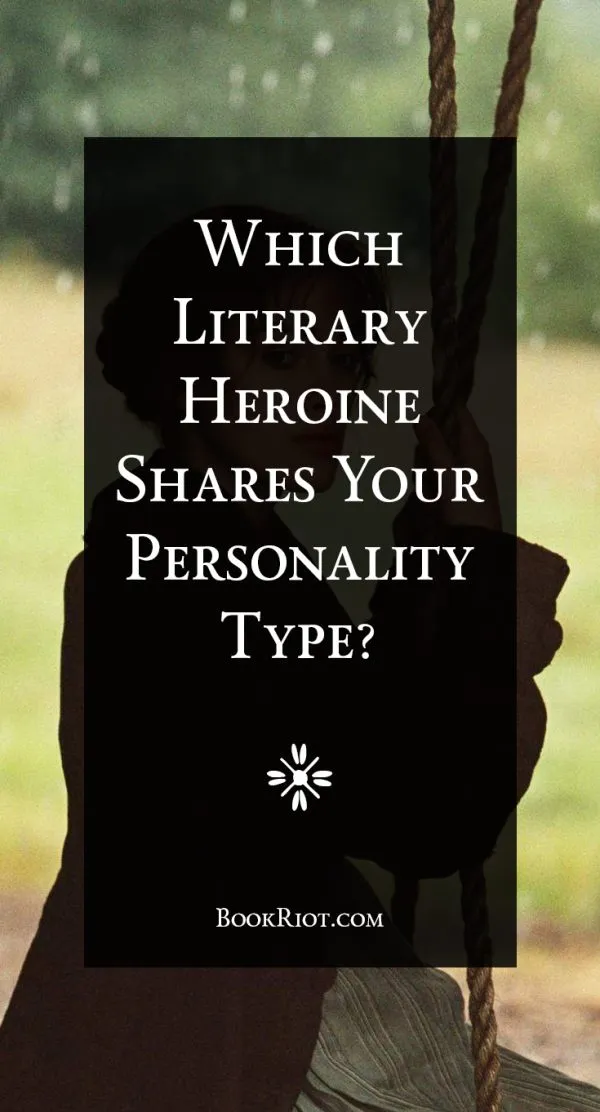
ESFJ – Margaret Hale, North and South
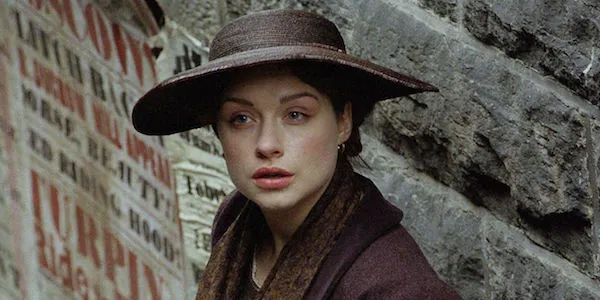 Beneath her prim-and-proper exterior, Margaret is warm, outgoing, and deeply concerned with the welfare of the laborers in Milton. ESFJs have a tendency to fill the role of mother hen, whether or not they are actually mothers. Margaret does this with the cotton mill workers—bringing them food during the strike and arguing their cause with the mill owners.
Beneath her prim-and-proper exterior, Margaret is warm, outgoing, and deeply concerned with the welfare of the laborers in Milton. ESFJs have a tendency to fill the role of mother hen, whether or not they are actually mothers. Margaret does this with the cotton mill workers—bringing them food during the strike and arguing their cause with the mill owners.
ESTJ – Hermione Granger, Harry Potter
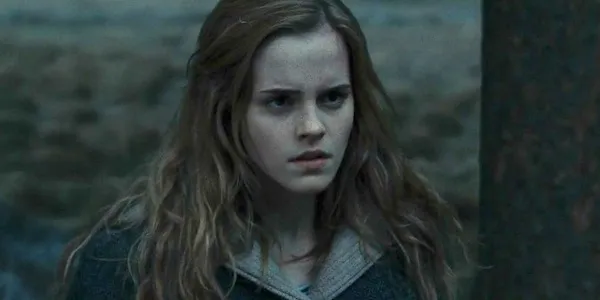 Hermione is a stickler for rules—a definite xSTJ trait if ever there was one. She’s logical, disciplined, organized, and has a habit of taking charge in almost any situation she encounters. The ESTJ type is also called “the supervisor” and that’s exactly the role Hermione often finds herself playing in her two xSFP friends, Ron and Harry.
Hermione is a stickler for rules—a definite xSTJ trait if ever there was one. She’s logical, disciplined, organized, and has a habit of taking charge in almost any situation she encounters. The ESTJ type is also called “the supervisor” and that’s exactly the role Hermione often finds herself playing in her two xSFP friends, Ron and Harry.
ISFJ – Diana Barry, Anne of Green Gables
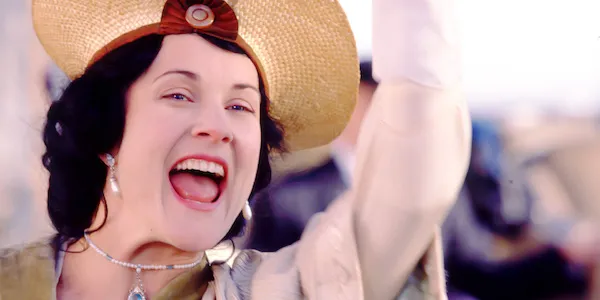 Everyone always talks about Anne, but Diana is a vastly underrated character. She may not be quite as imaginative or adventurous as Anne but she exemplifies the best qualities of the ISFJ—kindness and loyalty. And under Anne’s influence, she eventually learns to let her wild side out to play once in a while.
Everyone always talks about Anne, but Diana is a vastly underrated character. She may not be quite as imaginative or adventurous as Anne but she exemplifies the best qualities of the ISFJ—kindness and loyalty. And under Anne’s influence, she eventually learns to let her wild side out to play once in a while.
ISTJ – Bathsheba Everdene, Far from the Madding Crowd
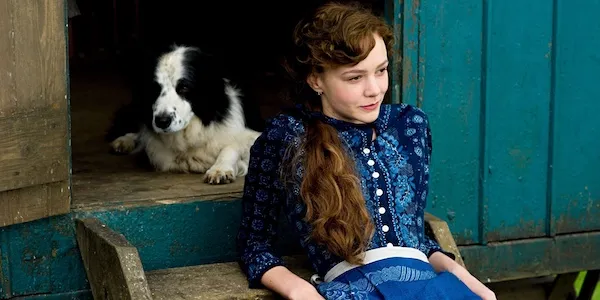 xSxJs are known for their adherence to tradition but Bathsheba proves that stereotypes don’t always reflect reality. In a time when women are restricted and oppressed in every way imaginable, Bathsheba revels in her independence and freedom. She rides her horse like a man, owns her own business, and isn’t afraid to claim her rightful place among the male farm owners in her community.
xSxJs are known for their adherence to tradition but Bathsheba proves that stereotypes don’t always reflect reality. In a time when women are restricted and oppressed in every way imaginable, Bathsheba revels in her independence and freedom. She rides her horse like a man, owns her own business, and isn’t afraid to claim her rightful place among the male farm owners in her community.
ESFP – Bridget Vreeland, The Sisterhood of the Traveling Pants
 Bridget is vivacious, gregarious, and adventurous. She leaps before looking and always follows her heart, even when it gets her in trouble. As an xSxP, she has a natural physical grace, which makes her a great soccer player. Bridget is a whirlwind of a girl and she can impulsively make self-destructive choices at times, but she’s also the boldest of her friends.
Bridget is vivacious, gregarious, and adventurous. She leaps before looking and always follows her heart, even when it gets her in trouble. As an xSxP, she has a natural physical grace, which makes her a great soccer player. Bridget is a whirlwind of a girl and she can impulsively make self-destructive choices at times, but she’s also the boldest of her friends.
ESTP – Scarlett O’Hara, Gone with the Wind
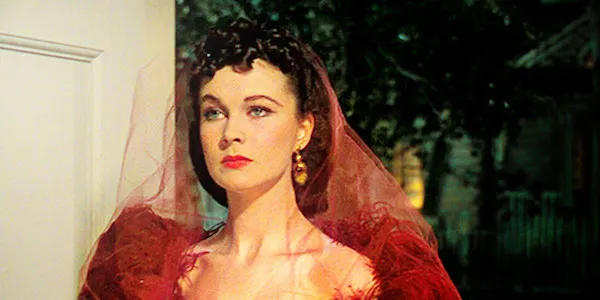 Bold, brash, and completely out of step with the conventional womanly virtues held up as models of her time, Scarlett is not your typical heroine. ESTPs rarely are. Though Scarlett has, well, issues, she’s a great example of the resourcefulness that is one of the ESTP’s most overlooked and under-appreciated characteristics.
Bold, brash, and completely out of step with the conventional womanly virtues held up as models of her time, Scarlett is not your typical heroine. ESTPs rarely are. Though Scarlett has, well, issues, she’s a great example of the resourcefulness that is one of the ESTP’s most overlooked and under-appreciated characteristics.
ISFP – Claire Fraser, Outlander
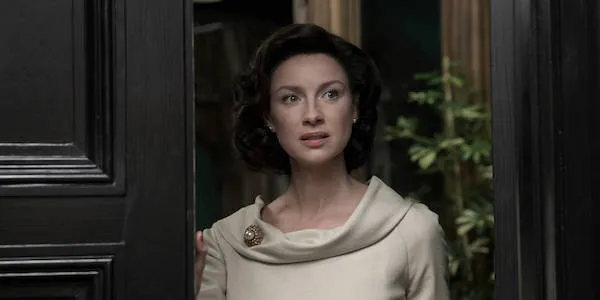 ISFPs are an interesting bunch. They can be quiet and incredibly charming in turns. They have a distinctive soft side paired with plenty of nerve. They appreciate the comforts of home but also love a good adventure. Claire exemplifies all these traits and shows the ISFP’s adaptability to new (or old…as in waaay back in time old) circumstances.
ISFPs are an interesting bunch. They can be quiet and incredibly charming in turns. They have a distinctive soft side paired with plenty of nerve. They appreciate the comforts of home but also love a good adventure. Claire exemplifies all these traits and shows the ISFP’s adaptability to new (or old…as in waaay back in time old) circumstances.
ISTP – Lisbeth Salander, The Girl with the Dragon Tattoo
 ISTPs are intense, adaptable, and have a certain tactical genius that no other personality type can match. They can come across as socially awkward. This isn’t necessarily because they’re incapable of blending in; they just don’t care that much about what people think of them. Lisbeth is a perfect combination of the ISTP’s intellectual acumen and physical prowess.
ISTPs are intense, adaptable, and have a certain tactical genius that no other personality type can match. They can come across as socially awkward. This isn’t necessarily because they’re incapable of blending in; they just don’t care that much about what people think of them. Lisbeth is a perfect combination of the ISTP’s intellectual acumen and physical prowess.
ENFP – Elizabeth Bennet, Pride and Prejudice
 ENFPs are passionate and full of life. They enjoy long walks in the fresh air, stimulating conversation, and tend to push back against conventional wisdom. With introverted feeling as their auxiliary function, they have a strong sense of morality and can be quick to judgment, much like how Lizzie judges Mr. Darcy when she first meets him.
ENFPs are passionate and full of life. They enjoy long walks in the fresh air, stimulating conversation, and tend to push back against conventional wisdom. With introverted feeling as their auxiliary function, they have a strong sense of morality and can be quick to judgment, much like how Lizzie judges Mr. Darcy when she first meets him.
ENFJ – Anna Karenina, Anna Karenina
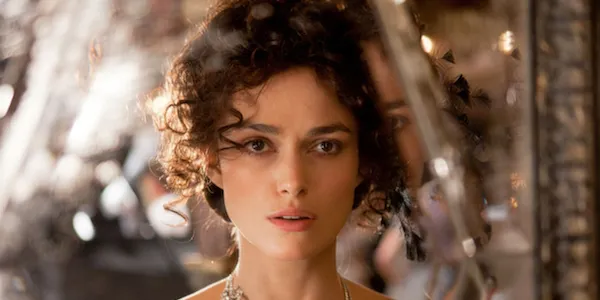 Anna is a passionate woman stuck in a passionless marriage. ENFJs are heart-centered people, so the idea of staying in a relationship driven more by duty and convention than love is untenable to her, especially when presented by the alluring alternative embodied in the equally passionate ESFP, Vronsky. Unfortunately, that doesn’t work out so well for our tragic heroine.
Anna is a passionate woman stuck in a passionless marriage. ENFJs are heart-centered people, so the idea of staying in a relationship driven more by duty and convention than love is untenable to her, especially when presented by the alluring alternative embodied in the equally passionate ESFP, Vronsky. Unfortunately, that doesn’t work out so well for our tragic heroine.
INFP – Lucy Pevensie, The Chronicles of Narnia
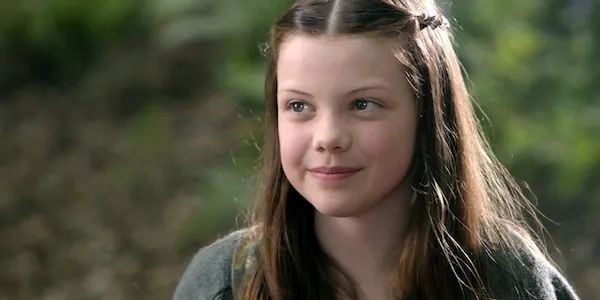 INFPs are dreamers. They have vast imaginations and the ability to see magic where others see only the humdrum realities of everyday life. Lucy believes in Narnia even when her siblings say she’s just imagining things. Out of all her siblings, she also forms the closest bonds with the creatures she meets in Narnia, possibly because they feel she intuitively understands them.
INFPs are dreamers. They have vast imaginations and the ability to see magic where others see only the humdrum realities of everyday life. Lucy believes in Narnia even when her siblings say she’s just imagining things. Out of all her siblings, she also forms the closest bonds with the creatures she meets in Narnia, possibly because they feel she intuitively understands them.
INFJ – Galadriel, The Lord of the Rings
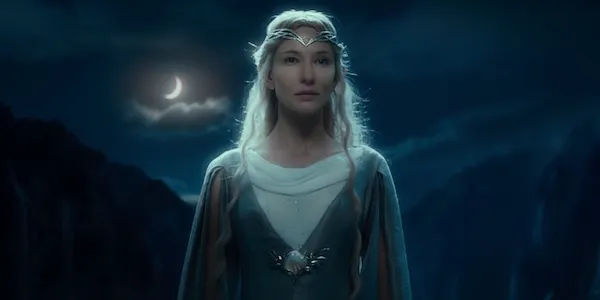 Galadriel has the gift of foresight, which is partly a magical elf thing, but also partly an INxJ thing. INxJs lead with introverted intuition, a cognitive function that’s really good at synthesizing information and projecting it into the future to see perceive outcomes. INFJs often come across as older and wiser than their years.
Galadriel has the gift of foresight, which is partly a magical elf thing, but also partly an INxJ thing. INxJs lead with introverted intuition, a cognitive function that’s really good at synthesizing information and projecting it into the future to see perceive outcomes. INFJs often come across as older and wiser than their years.
ENTP – Cosima, Orphan Black
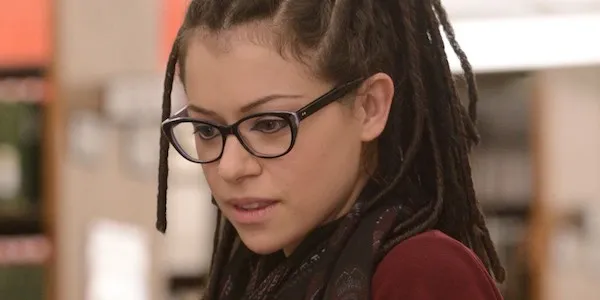 Yes, I am cheating here since Cosima started out as a television character. But since there is an Orphan Black graphic novel, I’m going with it because finding ENTP women in well-known books is REALLY hard. Which is too bad because they’re amazing. Case in point, Cosima is quirky, outgoing, intellectually brilliant, and always up for a bit of fun—classic characteristics of ENTPs the world over.
Yes, I am cheating here since Cosima started out as a television character. But since there is an Orphan Black graphic novel, I’m going with it because finding ENTP women in well-known books is REALLY hard. Which is too bad because they’re amazing. Case in point, Cosima is quirky, outgoing, intellectually brilliant, and always up for a bit of fun—classic characteristics of ENTPs the world over.
ENTJ – Miranda Priestly, The Devil Wears Prada
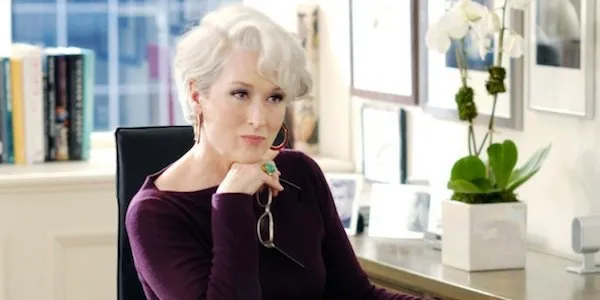 Miranda Priestly may not be a typical heroine but no one can deny that she is one badass woman. She’s worked her way to the top of a vicious industry and maintains her authority with an impressively steely air. She expects those around her to prove themselves just like she did and only bestows favor on those who have passed through the fiery trial of meeting her ridiculously high expectations.
Miranda Priestly may not be a typical heroine but no one can deny that she is one badass woman. She’s worked her way to the top of a vicious industry and maintains her authority with an impressively steely air. She expects those around her to prove themselves just like she did and only bestows favor on those who have passed through the fiery trial of meeting her ridiculously high expectations.
INTP – Violet Baudelaire, A Series of Unfortunate Events
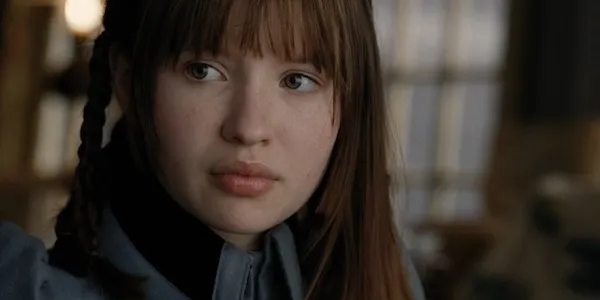 INTP women in fiction are rare and that’s one of the many reasons why I love Violet Baudelaire so much. INTPs love playing with ideas and are natural inventors. They’re highly logical and quick thinkers who can adapt to unexpected circumstances and challenges with relative ease—useful skills when you’re on the run from a villainous count.
INTP women in fiction are rare and that’s one of the many reasons why I love Violet Baudelaire so much. INTPs love playing with ideas and are natural inventors. They’re highly logical and quick thinkers who can adapt to unexpected circumstances and challenges with relative ease—useful skills when you’re on the run from a villainous count.
INTJ – Clarice Starling, The Silence of the Lambs
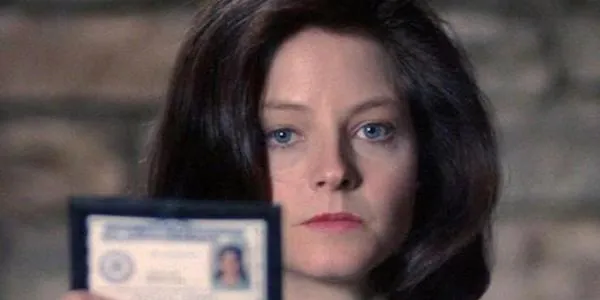 Clarice may be new and inexperienced, but she won’t be Dr. Lecter’s lunch. INTJs may be blunt at times but they can play mind games with the best of them. Clarice’s unique relationship with Lecter is even more interesting because they’re both INTJs. Their interactions are like a game of psychological chess—and Clarice can more than keep up with the brilliant cannibal.
Which literary heroine are you? Leave a note in the comments below!
You may also like…
Clarice may be new and inexperienced, but she won’t be Dr. Lecter’s lunch. INTJs may be blunt at times but they can play mind games with the best of them. Clarice’s unique relationship with Lecter is even more interesting because they’re both INTJs. Their interactions are like a game of psychological chess—and Clarice can more than keep up with the brilliant cannibal.
Which literary heroine are you? Leave a note in the comments below!
You may also like…













